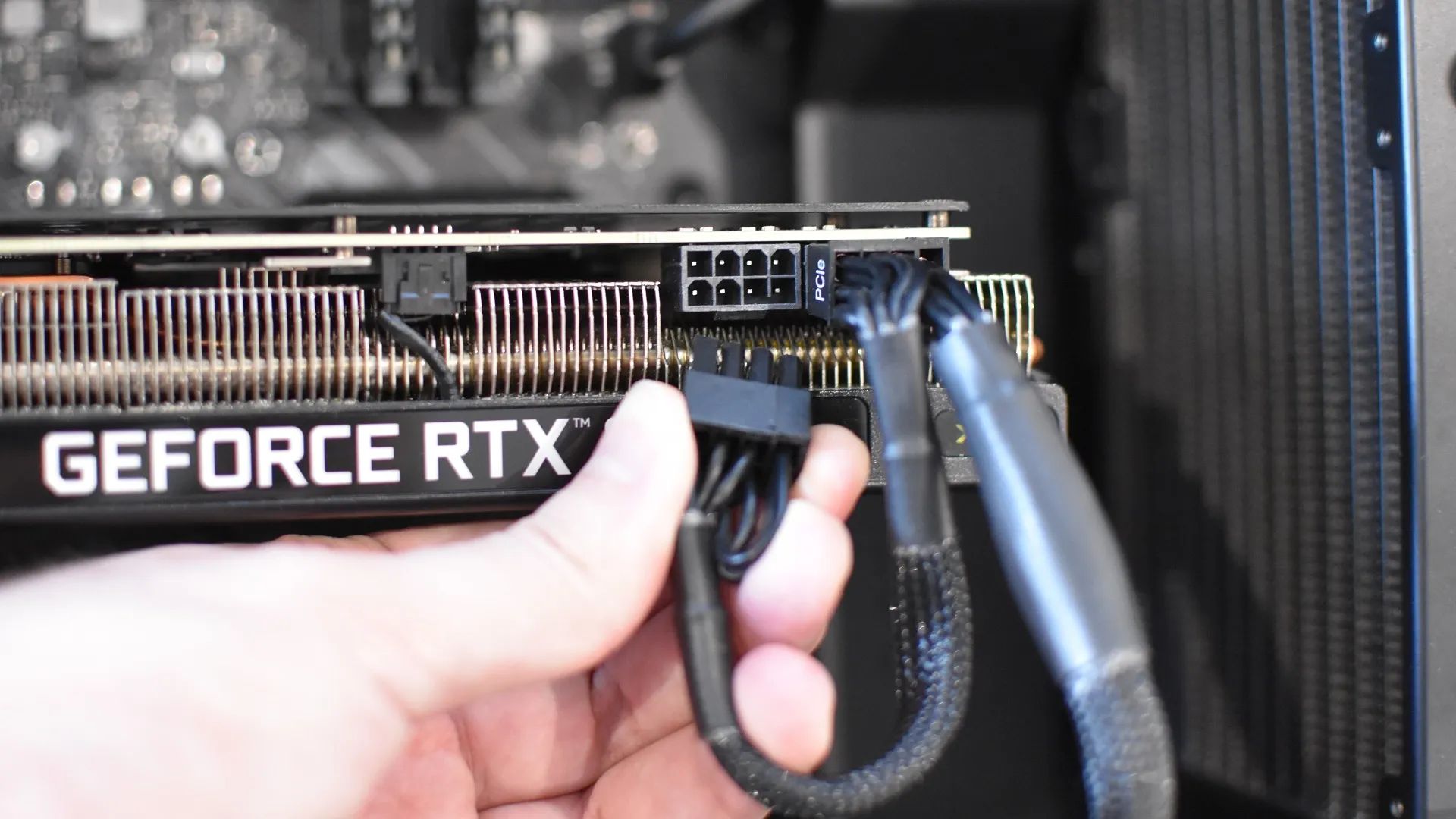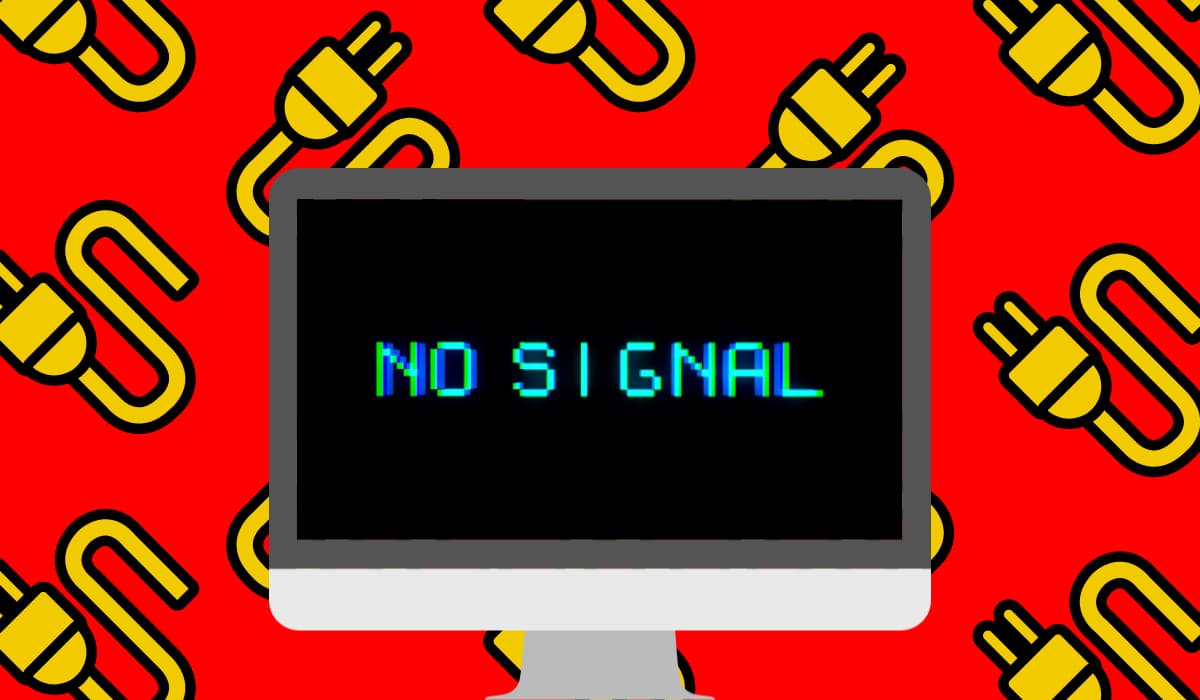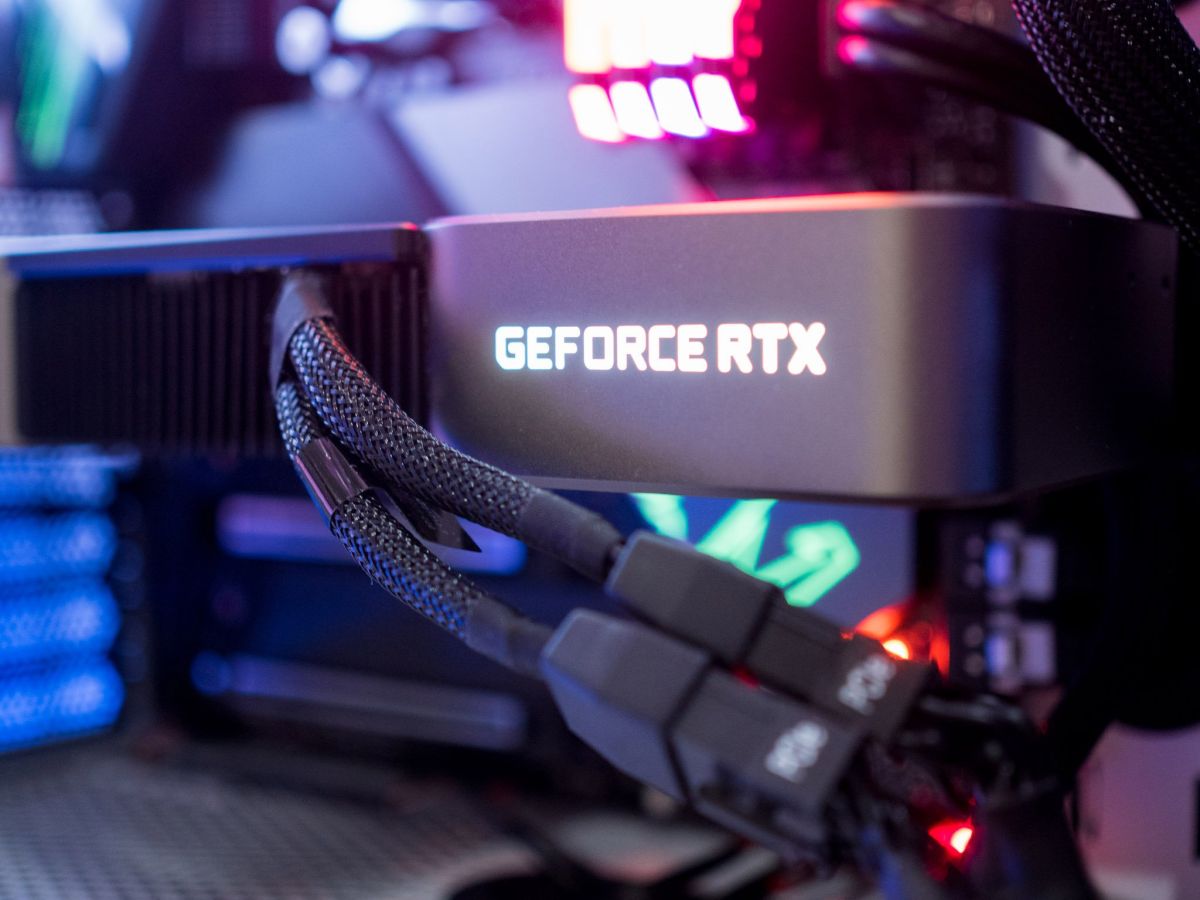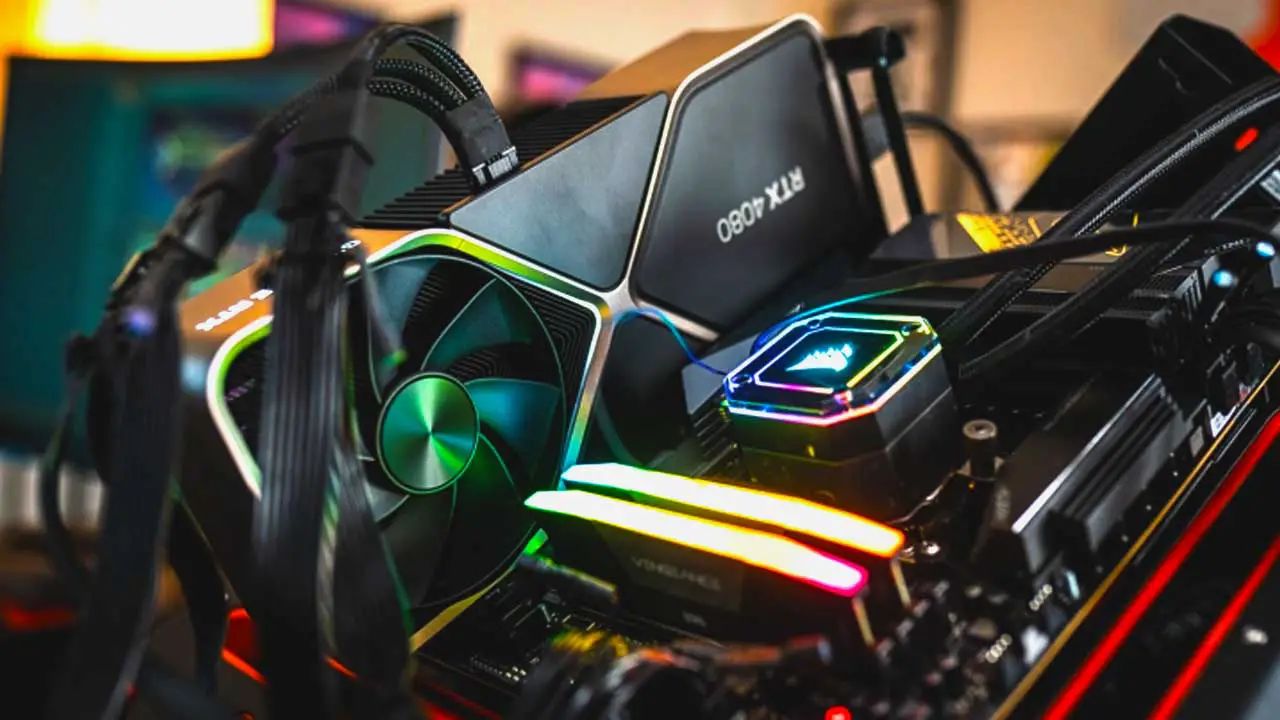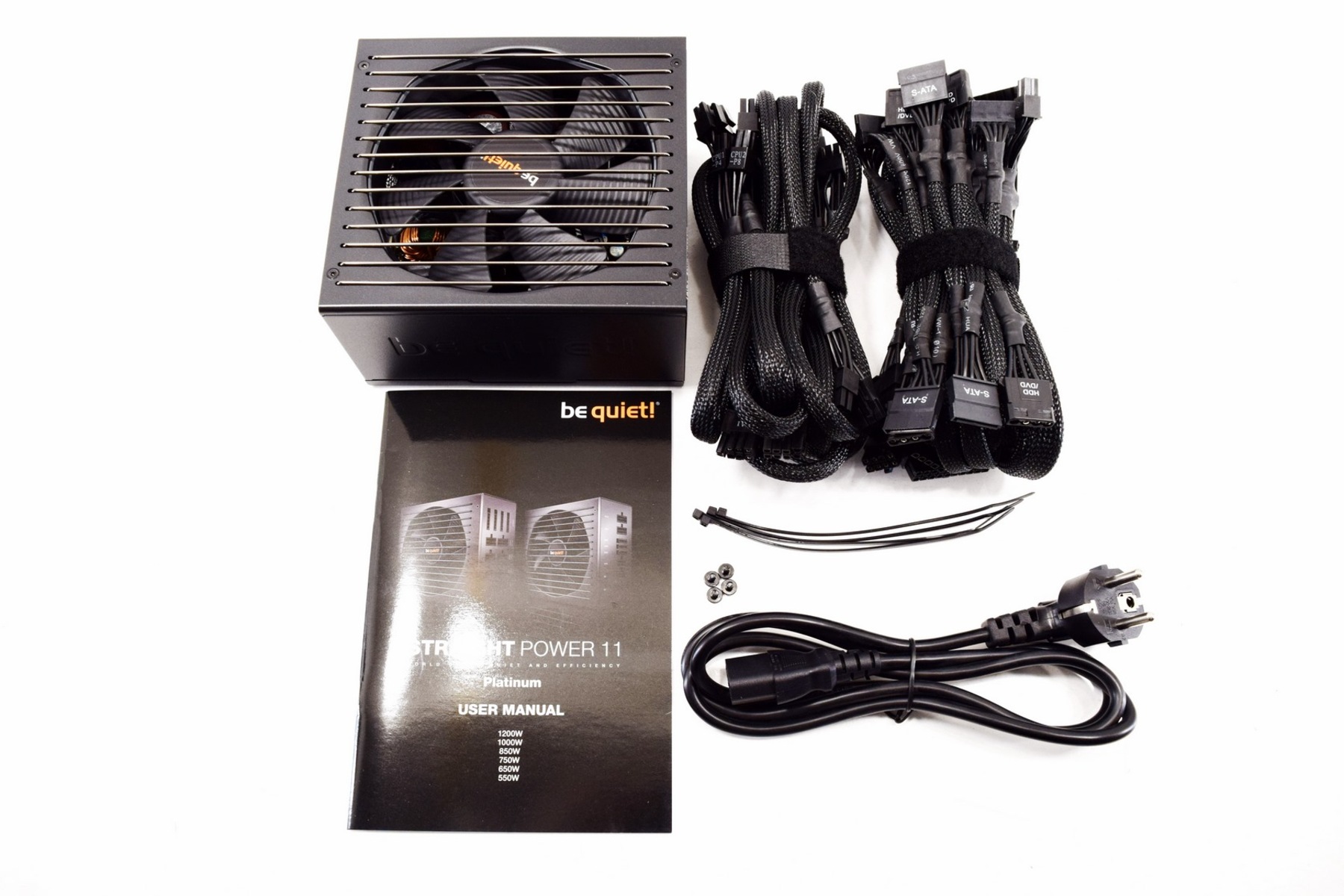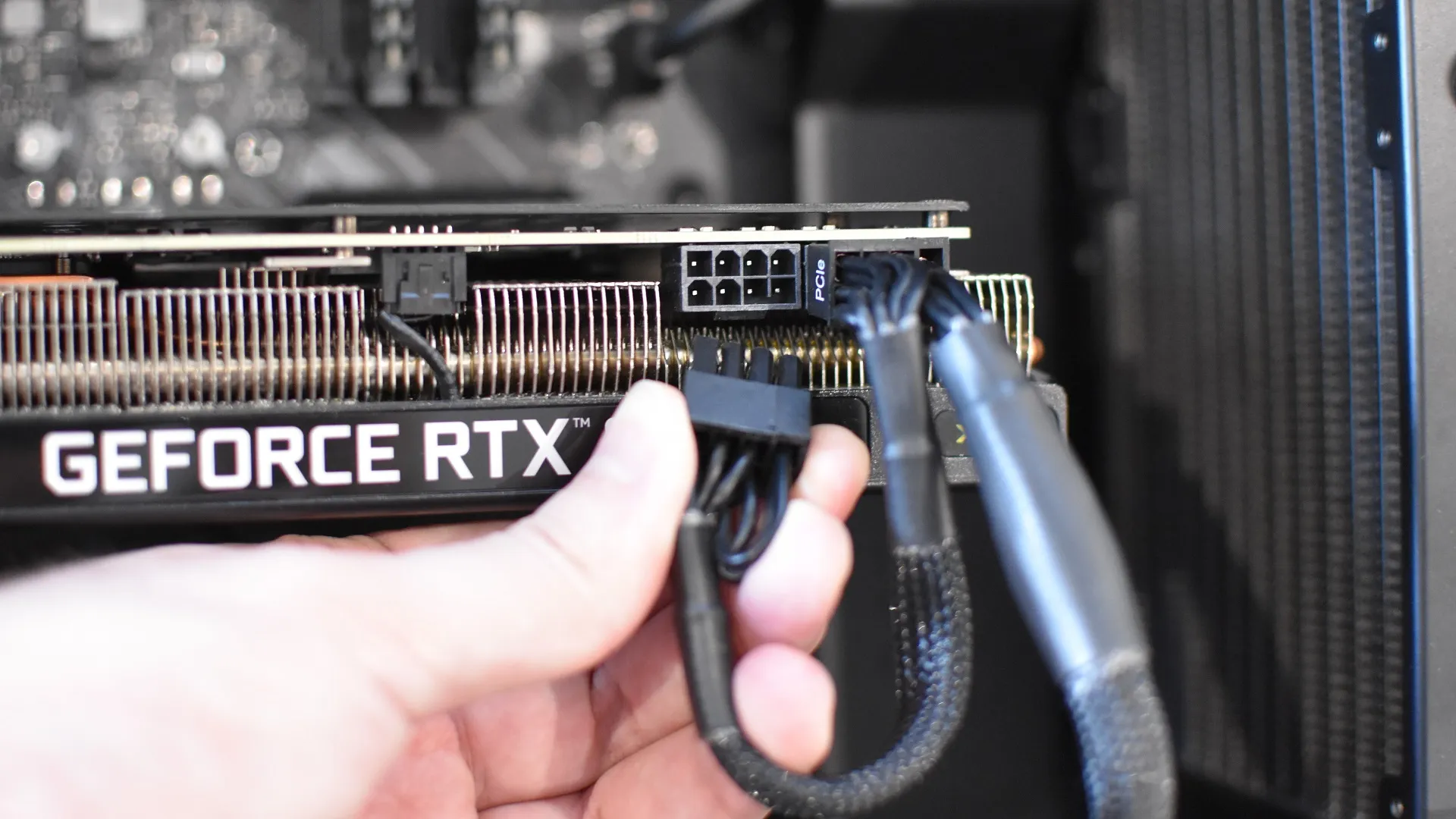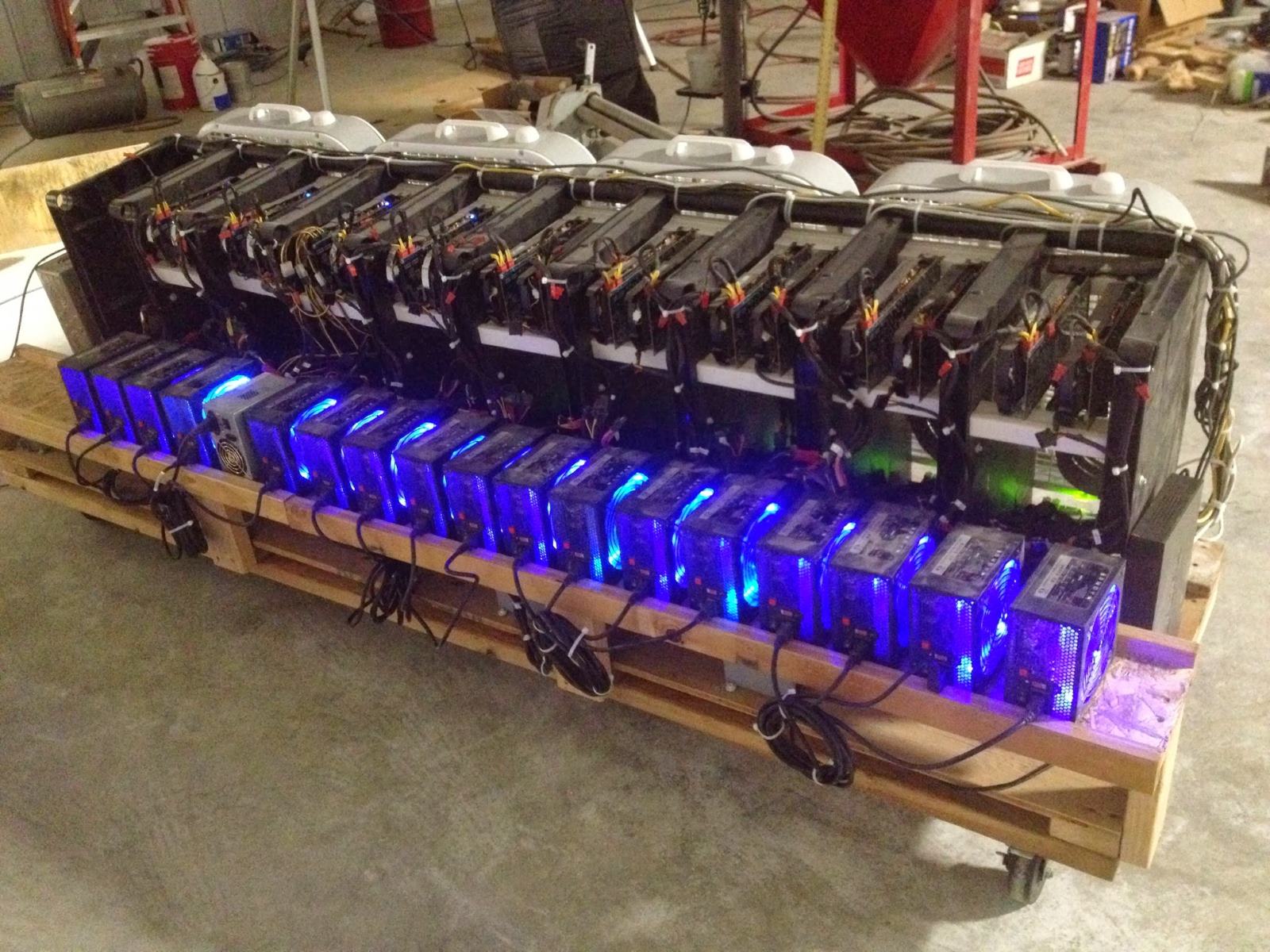Introduction
When it comes to connecting your graphics processing unit (GPU) to your computer or display, having the right cables is essential. Different cables serve different purposes, whether it’s providing power, transferring audio and video signals, or connecting peripheral devices. Understanding the types of cables that plug into a GPU can help you make the right connections for optimal performance.
In this article, we will explore the various cables commonly used to connect a GPU and provide an overview of their functions. We will discuss power cables, display cables, audio cables, and USB cables, each serving different purposes in ensuring the smooth operation of your GPU.
Whether you’re a gamer, graphic designer, or simply a computer enthusiast, having a clear understanding of these cables will help you make informed decisions and avoid any compatibility issues when connecting your GPU.
Now, let’s dive into the world of GPU cables and explore the different types available to you.
Power Cables
Power cables are crucial for supplying the necessary electrical power to your GPU. They ensure that your graphics card receives the appropriate power supply to function optimally. Most modern GPUs require one or more power cables to be connected directly to them.
The most commonly used power cable for GPUs is the 8-pin PCI Express (PCIe) power cable. It delivers the required power from the power supply unit (PSU) to the GPU. Depending on the power requirements of your graphics card, you may need to use one or more 8-pin PCIe power cables. Some high-end GPUs may also require a combination of 6-pin and 8-pin PCIe power cables.
It’s essential to ensure that your power supply unit has the necessary PCIe power cables available and that they are connected securely to the GPU. Insufficient power supply can lead to performance issues or even system instability.
When connecting power cables to your GPU, make sure to refer to the manufacturer’s guidelines and specifications. They will provide you with the exact power requirements and cabling instructions for your specific graphics card model.
Additionally, it’s worth noting that some GPUs can also be powered through the motherboard’s PCIe slot, eliminating the need for additional power cables. However, this option is generally limited to lower-end or integrated graphics cards with lower power requirements.
By ensuring that your GPU is properly powered with the right cables, you can unleash its full potential and enjoy smooth and reliable performance for all your graphics-intensive tasks.
Display Cables
Display cables are essential for connecting your GPU to a display device such as a monitor or TV. These cables transmit video signals from the GPU to the display, allowing you to see the output of your graphics card.
There are several types of display cables commonly used, each with its own features and compatibility:
- HDMI Cable: HDMI (High-Definition Multimedia Interface) cables are widely used and support both video and audio signals. They are commonly found on TVs, monitors, and laptops. HDMI cables provide high-definition video quality and are capable of transmitting 4K resolution and even higher.
- DisplayPort Cable: DisplayPort cables are versatile and support both video and audio signals. They offer high performance and can handle higher resolutions and refresh rates compared to HDMI. DisplayPort is commonly found on gaming monitors and high-end graphics cards. Additionally, DisplayPort cables can also support multiple monitors through daisy-chaining.
- DVI Cable: DVI (Digital Visual Interface) cables are older but still commonly used. They transmit only video signals and do not support audio. DVI cables come in several variants, including DVI-D (digital), DVI-A (analog), and DVI-I (integrated, supports both digital and analog signals). While DVI may not offer the same level of performance as HDMI or DisplayPort, it is still suitable for lower resolution displays.
- VGA Cable: VGA (Video Graphics Array) cables are analog cables used primarily for older displays and graphics cards. VGA is capable of transmitting lower resolutions and does not support digital signals. However, with the advent of digital displays, VGA has become less common and is gradually being replaced by newer digital interface cables.
When choosing a display cable, it’s essential to consider the capabilities of your GPU and the display device you are connecting to. Ensure that both the GPU and the display have compatible ports to establish a proper connection. Additionally, it’s worth noting that in some cases, using an adapter or converter may be necessary to connect different types of display cables.
By selecting the appropriate display cable, you can enjoy crisp visuals and immersive experiences on your monitor or TV, maximizing the potential of your GPU.
HDMI Cable
HDMI (High-Definition Multimedia Interface) cables are widely used for connecting devices such as GPUs, TVs, monitors, and other audio-video equipment. They have become the standard for transmitting high-quality audio and video signals, making them popular choices for connecting GPUs to display devices.
The main advantage of HDMI cables is their ability to transmit both audio and video signals in a single cable. This eliminates the need for separate audio cables, simplifying the setup process. HDMI cables support various audio formats, including Dolby Digital, DTS, and uncompressed audio, delivering immersive sound quality for movies, games, and other multimedia content.
When it comes to video signals, HDMI cables are capable of transmitting high-definition resolutions, including 4K, 8K, and beyond. With the latest versions of HDMI, they also support additional features like HDR (High Dynamic Range) and wide color gamut, enhancing the visual experience with more vibrant colors and improved contrast.
Another advantage of HDMI is its compatibility with Consumer Electronics Control (CEC), a feature that allows devices to be controlled using a single remote. With CEC, you can control multiple devices connected via HDMI, such as turning on/off the TV, adjusting volume, and switching inputs, without the need for separate remotes.
It’s worth noting that HDMI cables come in different versions, with each version offering certain features and capabilities. The most common versions are HDMI 1.4, HDMI 2.0, and HDMI 2.1. HDMI 2.1 is the latest version and supports even higher resolutions, refresh rates, and advanced features like Variable Refresh Rate (VRR) and Auto Low Latency Mode (ALLM), making it ideal for gaming and high-performance applications.
When choosing an HDMI cable, it’s important to select one with the appropriate version for your needs and ensure that it meets your desired specifications, such as the required resolution and audio format support. Additionally, consider the cable’s length, as longer cables may require additional signal amplification to maintain optimal performance.
HDMI cables are versatile and widely compatible, making them an ideal choice for connecting your GPU to a wide range of display devices, from TVs and monitors to projectors and home theater systems. With their ability to deliver high-quality audio and video signals, HDMI cables provide a seamless and immersive viewing experience for all your multimedia needs.
DisplayPort Cable
DisplayPort cables have become increasingly popular in recent years as a high-performance solution for connecting GPUs to displays. Developed by the Video Electronics Standards Association (VESA), DisplayPort cables offer several advantages over other display cables.
One of the key benefits of DisplayPort is its versatility and ability to support both video and audio signals. Similar to HDMI cables, DisplayPort cables can transmit high-definition audio formats such as Dolby TrueHD and DTS-HD Master Audio, providing an immersive audio experience during gaming or multimedia playback.
DisplayPort cables excel in terms of video quality and capabilities. They support higher resolutions and refresh rates compared to HDMI cables, making them ideal for gaming, video editing, and other graphics-intensive tasks. With the latest version, DisplayPort 1.4, they can handle 8K resolution at 60Hz or 4K at ultra-high refresh rates, delivering incredibly sharp and smooth visuals.
Another advantage of DisplayPort is its ability to daisy-chain multiple monitors. This means that if you have a GPU and monitors that support DisplayPort 1.2 or later, you can connect multiple displays in a sequence. This feature simplifies cable management and reduces clutter, especially for multi-monitor setups.
DisplayPort cables also support additional features like Adaptive Sync, which helps eliminate screen tearing and stuttering by synchronizing the monitor’s refresh rate with the GPU’s output. This technology, known as AMD FreeSync or NVIDIA G-Sync, can significantly enhance gaming experiences by delivering smoother gameplay and better visual performance.
When choosing a DisplayPort cable, it’s essential to consider the version and specifications that best suit your needs. DisplayPort cables come in different versions, such as DisplayPort 1.2, DisplayPort 1.3, and DisplayPort 1.4. While most modern GPUs and monitors support at least DisplayPort 1.2, higher versions offer more advanced features and improved performance.
Overall, DisplayPort cables provide a robust and versatile solution for connecting GPUs to displays. With their superior video and audio capabilities, support for high resolutions and refresh rates, and features like daisy-chaining and adaptive sync, DisplayPort cables are an excellent choice for gamers, content creators, and professionals who demand the best visual experience from their systems.
DVI Cable
DVI (Digital Visual Interface) cables have been a common choice for connecting GPUs to displays for many years. While not as prevalent as HDMI or DisplayPort, DVI cables still have their advantages and are used in various scenarios.
DVI cables are primarily designed for transmitting video signals and do not carry audio. They come in different variants, including DVI-I (integrated), DVI-D (digital), and DVI-A (analog). DVI-D is the most commonly used variant, providing a pure digital signal, while DVI-I supports both digital and analog signals, making it compatible with a broader range of devices.
One of the main advantages of DVI cables is their compatibility with older displays and graphics cards. Many older monitors and graphics cards feature DVI ports, making DVI cables the go-to option for connecting them. Additionally, DVI cables are capable of transmitting resolutions up to 2560×1600, making them suitable for displays that do not require ultra-high resolutions.
While DVI cables do not support the latest technologies and features compared to HDMI or DisplayPort, they are still widely used for specific purposes. DVI cables can be particularly useful in situations where the display device or GPU only has DVI ports available. For example, connecting to a projector or a secondary monitor that lacks HDMI or DisplayPort connectivity.
It’s important to note that DVI cables are gradually becoming less common as newer display technologies emerge. HDMI and DisplayPort cables offer superior performance, support higher resolutions, and include audio capabilities, making them the preferred choice for most modern displays.
If you still rely on DVI cables, it’s crucial to ensure that your GPU and display have compatible DVI ports. You may need to use adapters or converters if you need to connect to devices with different types of video ports. Also, keep in mind that DVI cables are not capable of transmitting audio signals, so a separate audio connection may be required if audio output is needed.
While DVI cables may not boast the latest features and specifications, they continue to serve as a reliable connection option for legacy displays and graphics cards. They offer a straightforward and cost-effective solution for those who don’t require the advanced capabilities of HDMI or DisplayPort.
VGA Cable
VGA (Video Graphics Array) cables have been a standard for connecting displays to computers for several decades. They were widely used before digital display technologies became prevalent. While VGA has gradually been replaced by newer digital interfaces, it still finds utility in certain scenarios.
VGA cables are analog cables and are primarily used for transmitting video signals. They do not support digital signals, making them less suitable for modern high-resolution displays. VGA connectors have 15 pins arranged in three rows, and they can handle resolutions up to 1920×1080 (Full HD).
One advantage of VGA cables is their compatibility with older displays, projectors, and graphics cards. Many legacy devices still support VGA connections, making VGA cables necessary for maintaining compatibility in such cases. Additionally, VGA cables are relatively inexpensive and widely available.
It’s important to note that VGA cables do not carry audio signals. If you need to transmit audio along with the video, you will need to use a separate audio cable or alternative display cables like HDMI or DisplayPort that support audio transmission.
One downside of VGA cables is their susceptibility to signal degradation over long distances. Analog signals tend to degrade as the cable length increases, which can result in decreased image quality and potential ghosting or blurriness. It’s recommended to keep the cable length as short as possible for optimal performance.
As digital display technologies have become more prevalent, VGA cables have gradually become less common. Most modern graphics cards and displays no longer feature VGA ports, requiring the use of adapters or converters to connect VGA cables. However, VGA cables can still be a useful option for connecting older devices or in situations where other digital interfaces are not available.
It’s worth considering the compatibility of your GPU and display before using VGA cables. If your graphics card or display only supports digital interfaces like HDMI or DisplayPort, it may be necessary to use an adapter or converter to connect a VGA cable.
While VGA cables have been largely phased out in favor of digital display interfaces, they still serve as a viable solution for specific applications and older devices. If you require compatibility with legacy equipment or find yourself in a situation where VGA is the only option available, VGA cables can still provide a functional video connection.
Audio Cables
Audio cables play a crucial role in connecting the audio output of your GPU to speakers, headphones, or other audio devices. They ensure that you can enjoy high-quality sound while using your computer, whether it’s for gaming, listening to music, or watching movies.
There are different types of audio cables commonly used with GPUs:
- Audio Jack: The audio jack, also known as the 3.5mm headphone jack or auxiliary (aux) port, is a widely used audio connection. It allows you to plug in headphones, speakers, or other audio devices directly into the audio output of your GPU. This analog connection is commonly found on laptops, desktop computers, and some gaming consoles.
- SPDIF Cable: The SPDIF (Sony/Philips Digital Interface) cable is a digital audio cable that can transmit both stereo and multi-channel audio signals. It provides a higher-quality audio transfer compared to the analog audio jack. SPDIF cables are commonly used to connect a GPU to an external audio receiver or soundbar with SPDIF input.
When choosing an audio cable, consider the available ports on your GPU and the audio device you want to connect. Ensure that the cable you choose matches the ports for a proper connection.
It’s worth noting that some GPUs and audio devices use HDMI or DisplayPort cables to transmit both video and audio signals. This eliminates the need for separate audio cables, as the audio is carried through the same cable that connects the GPU to the display device. However, not all GPUs or displays support audio transmission through HDMI or DisplayPort, so it’s important to check the specifications of your devices.
In situations where you need to transmit audio from your GPU to speakers or audio equipment located far away, wireless audio solutions or audio-over-network technologies can be used. These options allow for more flexibility in terms of audio placement and reduce cable clutter.
Whether you’re playing games, watching movies, or listening to music, having the right audio cable ensures that you can experience immersive sound quality from your GPU. Consider the audio capabilities of your GPU and the audio devices you want to connect to make an informed decision about the appropriate audio cables to use.
Audio Jack
The audio jack, also known as the 3.5mm headphone jack or auxiliary (aux) port, is a widely used audio connection that allows you to connect a variety of devices to your GPU for audio output. It is a versatile analog port commonly found on laptops, desktop computers, and some gaming consoles.
One of the main advantages of the audio jack is its universal compatibility. Most headphones, earphones, speakers, and audio equipment come with a 3.5mm audio connector, making them compatible with the audio jack on your GPU. This ease of use and widespread availability makes the audio jack a go-to choice for connecting audio devices.
The audio jack provides stereo audio output, allowing you to enjoy music, movies, and games with immersive sound. It is a trusted connection for personal audio enjoyment, whether you’re using headphones for private listening or connecting speakers for a shared audio experience.
When using the audio jack, it’s important to consider the impedance of the connected audio device. Impedance refers to the electrical resistance of the device and plays a role in determining the quality of sound reproduction. Matching the impedance of the audio device with the output impedance of the GPU’s audio jack can help ensure optimal audio performance.
It’s worth noting that some GPUs and audio devices utilize HDMI or DisplayPort connections to transmit both video and audio signals. In such cases, the audio jack may not be necessary for audio output, as the audio is carried through the same cable. However, it’s important to check the audio capabilities of your GPU and the compatibility of your connected devices to determine the appropriate audio connection.
One drawback of the audio jack is its limitation to transmitting analog audio signals. Compared to digital audio connections like SPDIF, the audio jack may be more susceptible to background noise interference. Additionally, the audio jack does not support multi-channel audio formats, limiting its capabilities for surround sound experiences.
Despite its limitations, the audio jack remains a widely used and reliable audio connection for everyday audio needs. It offers simple connectivity and compatibility with a wide range of devices, making it an accessible and convenient option for audio output from your GPU.
SPDIF Cable
The SPDIF (Sony/Philips Digital Interface) cable is a digital audio cable commonly used to connect GPUs to external audio receivers, soundbars, or other audio devices that support SPDIF input. It allows for the transmission of high-quality digital audio signals, making it an excellent choice for those seeking enhanced audio experiences.
Compared to analog audio connections like the audio jack, the SPDIF cable offers several advantages. Firstly, it provides a higher level of audio fidelity by transmitting audio in a digital format, which helps minimize signal degradation and interference. This means that you can enjoy pristine, crystal-clear audio when using an SPDIF cable.
SPDIF cables support both stereo and multi-channel audio signals, making them suitable for various audio setups, including surround sound systems. They can transmit audio in formats such as Dolby Digital, DTS, and PCM (Pulse Code Modulation). With an SPDIF connection, you can experience immersive audio and enjoy the full potential of your audio devices.
One of the key benefits of SPDIF cables is their versatility. They come in different connector types, including coaxial and optical (TOSLINK), allowing for compatibility with a wide range of audio devices. The coaxial SPDIF connection uses a single RCA connector, while the optical SPDIF connection uses a fiber optic cable with a standardized TOSLINK connector.
When connecting an SPDIF cable to your GPU, it’s essential to ensure that your GPU has an available SPDIF output port. Many modern GPUs feature SPDIF output ports, but it’s always recommended to consult the GPU’s technical specifications or user manual for verification.
It’s worth noting that newer display interfaces like HDMI and DisplayPort can also transmit audio signals, eliminating the need for a separate audio cable. However, if you prefer to maintain a dedicated audio connection or your audio device lacks HDMI or DisplayPort input, the SPDIF cable remains a reliable option.
When using an SPDIF cable, it’s important to ensure the compatibility of your audio devices. Both the GPU and the audio receiver or soundbar must support SPDIF input and have the appropriate SPDIF connector type. Additionally, configuring the audio settings on your computer or audio device to utilize the SPDIF connection is necessary to ensure proper audio output.
Overall, the SPDIF cable offers a convenient and high-quality digital audio connection for those seeking an enhanced audio experience. By utilizing its capabilities, you can enjoy immersive sound and take full advantage of your audio equipment’s capabilities.
USB Cables
USB (Universal Serial Bus) cables are widely used for a variety of purposes, including connecting peripheral devices to your GPU. USB cables offer versatility and convenience, allowing you to connect devices such as keyboards, mice, external storage, and audio interfaces directly to your GPU.
There are several types of USB connectors commonly used, including USB Type-A and USB Type-C:
- USB Type-A Cable: USB Type-A cables are the most common USB connectors. They are rectangular in shape and can be found on most computers and USB devices. USB Type-A cables are used for connecting devices like keyboards, mice, printers, and external storage to your GPU. They are backward compatible with older USB versions, but data transfer speeds may be limited by the compatibility of the device.
- USB Type-C Cable: USB Type-C cables are the newer standard for USB connections. They have a smaller, reversible connector that offers increased data transfer speeds and power capabilities. USB Type-C cables can support higher data transfer rates and can deliver more power, making them suitable for connecting external storage devices, high-speed peripherals, and even monitors to your GPU.
USB cables not only facilitate data transfer but also provide power to connected devices. This eliminates the need for separate power adapters for many peripherals, reducing cable clutter and simplifying the setup process.
When connecting USB devices to your GPU, it’s important to ensure that your computer has sufficient USB ports available. Additionally, some GPUs may provide specific USB ports designed to offer improved power delivery or support specialized functionalities, such as virtual reality (VR) headsets.
It’s worth mentioning that USB cables come in different versions, such as USB 2.0, USB 3.0, USB 3.1, and USB 3.2. The different versions offer varying data transfer speeds and capabilities. To leverage the maximum performance of your USB devices, it’s recommended to use the latest USB version supported by both your GPU and the peripheral device.
USB cables have become an integral part of computer connectivity, providing a simple and reliable solution for connecting a wide range of peripherals to your GPU. Their versatility, ease of use, and power delivery capabilities make USB cables an essential component for expanding your computer’s functionality and optimizing your workflow.
USB Type-A Cable
USB Type-A cables are the most common type of USB cables used for connecting peripheral devices to your GPU. They feature a rectangular-shaped connector that can be found on most computers, laptops, and USB devices. USB Type-A cables have become a ubiquitous and versatile solution for a wide range of connectivity needs.
One of the main advantages of USB Type-A cables is their compatibility. They are backward compatible with older USB versions, ensuring connectivity with various USB devices. This means that you can use a USB Type-A cable to connect keyboards, mice, printers, external storage devices, and many other peripherals to your GPU.
USB Type-A cables also facilitate data transfer between your GPU and connected devices. Depending on the USB version, data transfer speeds and capabilities may vary. For example, USB 2.0 offers a maximum transfer rate of 480 Mbps, while USB 3.x versions can provide significantly higher speeds, reaching up to 5 Gbps or even 10 Gbps with USB 3.1 Gen 2.
Additionally, USB Type-A cables provide power to connected devices, eliminating the need for separate power adapters for many peripherals. USB ports on your GPU can supply power to devices like keyboards, mice, and even charge mobile devices. However, it’s important to note that the power delivery capabilities of USB Type-A cables may vary depending on the specific port and USB version.
When using USB Type-A cables, it’s crucial to ensure that your GPU has available USB Type-A ports to connect your peripherals. Some GPUs may offer a limited number of USB ports, while others provide additional ports through expansion cards or hubs.
It’s also worth considering the data transfer requirements of your devices. If you have high-speed peripherals or require faster data transfer rates, using a USB 3.x Type-A cable can help maximize performance and efficiency.
USB Type-A cables have become an essential component in modern computing, providing seamless connectivity and data transfer capabilities for a wide range of peripheral devices. Their widespread usage and compatibility make them a reliable choice for expanding the functionality of your GPU and enhancing your overall computing experience.
USB Type-C Cable
USB Type-C cables have emerged as the new standard for USB connections and provide enhanced performance and versatility compared to USB Type-A cables. They feature a smaller, reversible connector that can be plugged in either way, making them more convenient to use. USB Type-C cables offer a wide range of capabilities and are becoming increasingly common in modern devices, including GPUs.
One of the significant advantages of USB Type-C cables is their increased data transfer speeds. USB 3.1 Gen 2 Type-C cables can support data transfer rates of up to 10 Gbps, allowing for faster and more efficient file transfers. This makes them ideal for connecting high-speed storage devices, external SSDs, or other peripherals that require quick data transmission.
Another notable feature of USB Type-C cables is their enhanced power delivery capability. USB Type-C supports up to 100W power delivery, making it possible to charge laptops, tablets, and smartphones directly from a compatible GPU port. This eliminates the need for separate power adapters and simplifies cable management.
In addition to data and power delivery, USB Type-C cables also support video and audio transmission. With the help of DisplayPort Alt Mode, USB Type-C connections can transmit audio and video signals, allowing you to connect external monitors, projectors, or other display devices directly to your GPU.
USB Type-C cables provide a future-proof solution for connectivity. They are highly versatile and can be adapted to work with various types of interfaces such as HDMI, VGA, or Ethernet through the use of appropriate adapters or dongles. This flexibility allows USB Type-C cables to adapt to changing technological needs and ensures compatibility with a wide variety of devices.
It’s worth noting that while USB Type-C is a rapidly growing standard, not all devices and GPUs support this connection. It’s important to check the specifications of your GPU and ensure that it has USB Type-C ports available for connectivity. Compatibility can vary depending on the generation of USB Type-C and the specific capabilities of the GPU.
In summary, USB Type-C cables offer a significant leap in terms of performance and versatility compared to USB Type-A cables. Their reversible design, increased data transfer speeds, power delivery capabilities, and support for video and audio transmission make them a suitable choice for connecting a wide range of peripherals and display devices directly to your GPU.
Conclusion
Having the right cables to connect your GPU is crucial for optimal performance and functionality. Understanding the various types of cables that plug into a GPU can help ensure that you have the right connections for your specific needs.
Power cables are essential for providing the necessary electrical power to your GPU. Depending on the power requirements of your graphics card, you may need one or more 8-pin PCIe power cables to ensure stable and reliable performance.
Display cables, such as HDMI, DisplayPort, DVI, and VGA, are used to connect your GPU to a display device. Each type has its advantages and compatibility considerations. HDMI and DisplayPort cables offer higher resolutions, refresh rates, and additional features like audio support and daisy-chaining. DVI and VGA cables, while less common nowadays, are still useful for connecting to older displays and devices.
Audio cables, namely the audio jack and SPDIF cable, allow you to enjoy high-quality audio from your GPU. The audio jack is commonly used for personal audio output, like headphones and speakers, while the SPDIF cable provides digital audio transmission for higher fidelity and compatibility with audio receivers and soundbars.
USB cables, including USB Type-A and USB Type-C, offer versatile connectivity options for a wide range of peripherals. USB Type-A cables are the standard choice for connecting devices like keyboards, mice, printers, and storage devices to your GPU. USB Type-C cables provide faster data transfer speeds, power delivery capabilities, and video/audio transmission abilities, making them ideal for high-speed storage, charging devices, and connecting displays directly to your GPU.
In conclusion, selecting the right cables for your GPU is essential for achieving optimal performance, compatibility, and functionality. Consider the power requirements, display capabilities, audio preferences, and connectivity needs when choosing the appropriate cables. By doing so, you can unleash the full potential of your GPU and enjoy a seamless computing or gaming experience.







